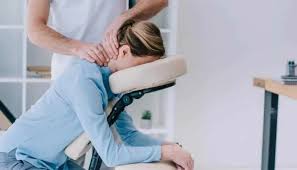Neck pain can interfere with everyday life, turning simple movements into discomfort and sometimes limiting your mobility. Physical therapy is a key part of treating this pain and helping you get back to your normal activities. By customizing treatment plans to your specific needs, physical therapists aim to reduce pain and prevent future problems. Here’s how physical therapy supports your recovery, the methods used, and ways to maintain progress:
What Causes Neck Pain?
Neck pain can be caused by many factors, such as injuries, poor posture, or health conditions. A car accident might cause whiplash, straining neck muscles or ligaments. Spending too much time looking at screens can lead to muscle imbalances and put stress on the neck bones. The first step to solving neck pain is understanding what’s causing it. Physical therapists examine pain triggers, movement range, and muscle balance to develop a treatment plan that addresses both symptoms and root causes.
How Does Therapy Help?
Physical therapy helps restore movement and reduce pain using hands-on techniques and guided exercises. The treatment includes different methods, each with a specific goal:
- Manual Therapy: This hands-on method targets muscle tightness and joint stiffness.
- Targeted Exercises: These exercises aim to strengthen and stretch muscles, especially in the neck and nearby areas.
- Heat/Cold Therapy: Heat relaxes tight muscles, while cold reduces swelling and inflammation, especially after injuries.
By combining these techniques, physical therapists help reduce pain now and support long-term recovery.
What Happens at Sessions?
Physical therapy sessions are usually tailored to each person. On the first visit, therapists check your range of motion, pain levels, and overall posture. They may also ask about specific movements or activities that make your pain worse or better. This assessment helps create a personalized treatment plan.
Following visits depend on your goals but may include hands-on techniques, guided exercises, and education. Patients may also learn stretches to do at home to keep making progress between appointments. Over time, these sessions can reduce pain and improve movement, helping individuals be more active in their daily activities.
Is Core Strength Key?
Although neck pain mainly affects the upper body, the core plays a surprising role in maintaining proper alignment. A weak core may cause compensatory movements, which can put extra strain on the neck and shoulders. Physical therapists may recommend exercises that strengthen the back and abdominal muscles.
Planks help improve stability and reduce pressure on the spine. Bridge exercises strengthen supporting muscles and promote better posture. A strong, stable core provides a solid foundation, allowing the neck to move better and with less strain during daily activities.
Can Therapy Prevent Injuries?
Physical therapy not only addresses current pain but also helps to prevent future problems. A key aspect of this approach is education. Therapists teach individuals how to adjust their workstations, improve sleep positions, and maintain proper posture during daily activities. These steps may help:
- Using ergonomic chairs and monitors can reduce neck strain during desk work.
- Supporting pillows help keep the neck aligned at night, which can lessen stiffness in the morning.
When combined with regular stretching and strengthening exercises, these strategies can greatly reduce the chances of pain returning.
Get Help for Neck Pain
Once therapy concludes, ongoing habits maintain progress. Regular stretching, proper posture, and periodic physical activity all contribute to long-term results. Those who complete physical therapy typically achieve not only reduced pain but improved overall posture and movement. Find a pain specialist to see what you can do.
- Exploring Effective Approaches to Substance Treatment and Recovery
- The Connection Between Arthritis and Chronic Pain Management
- The Role of Internal Medicine in Managing Diabetes
- The Diverse Specializations Within Ophthalmologists and Their Impact on Eye Health
- Exploring the Role of Sports Medicine in Injury Prevention

